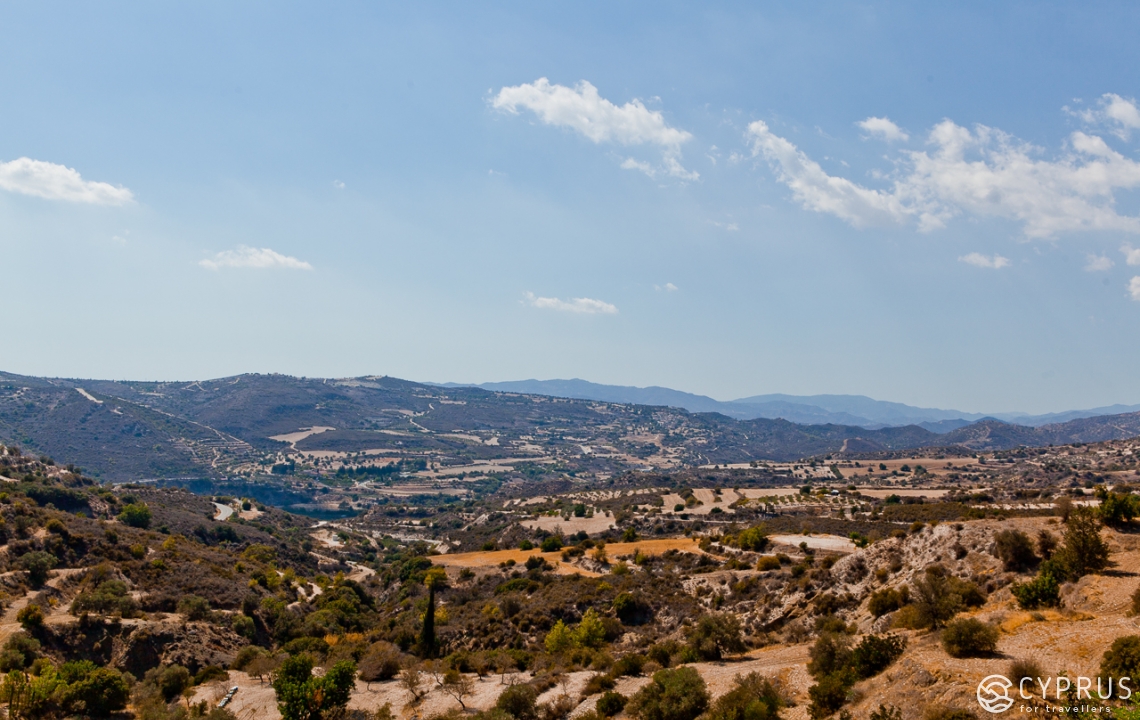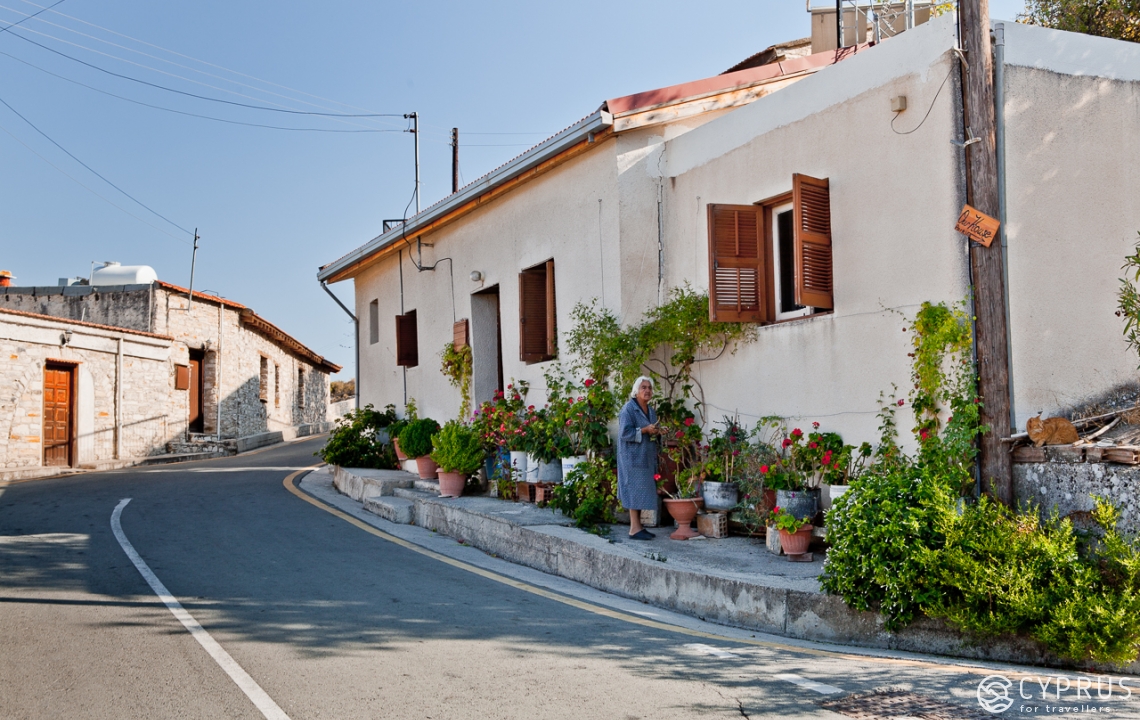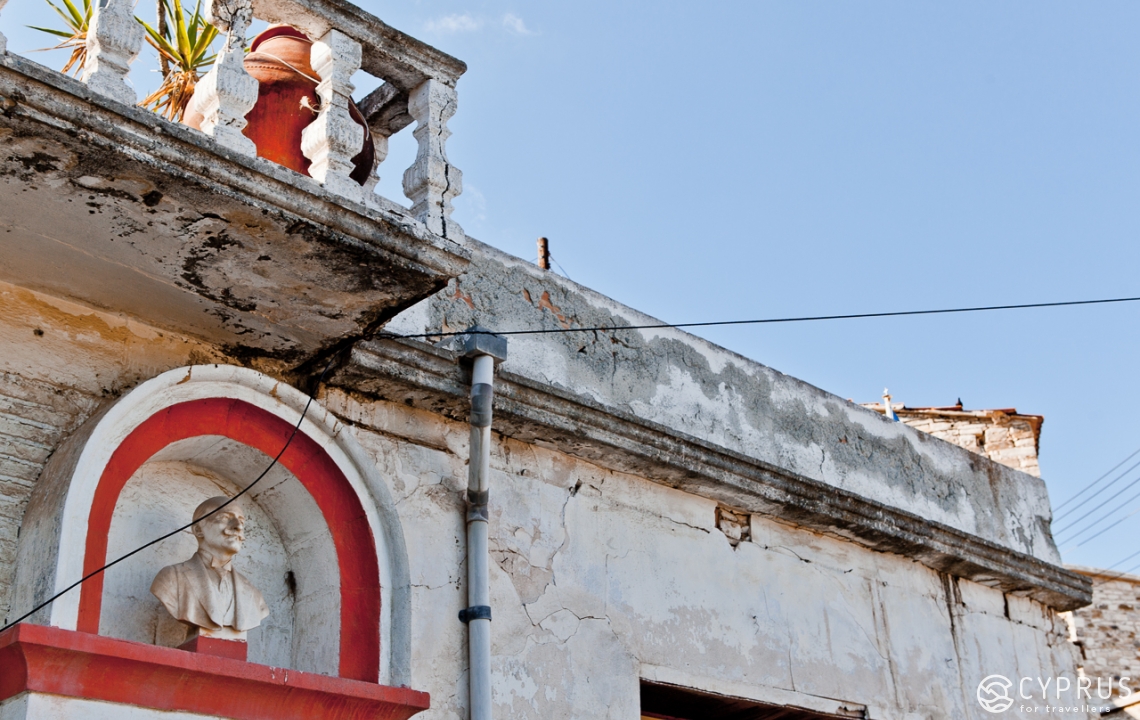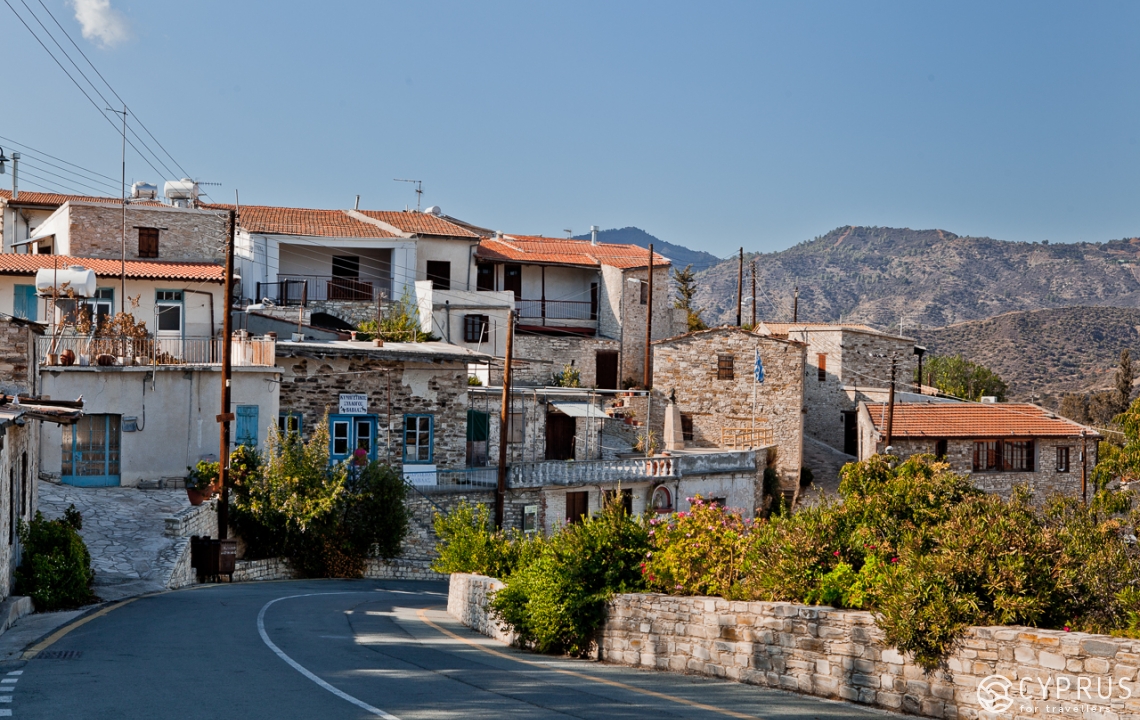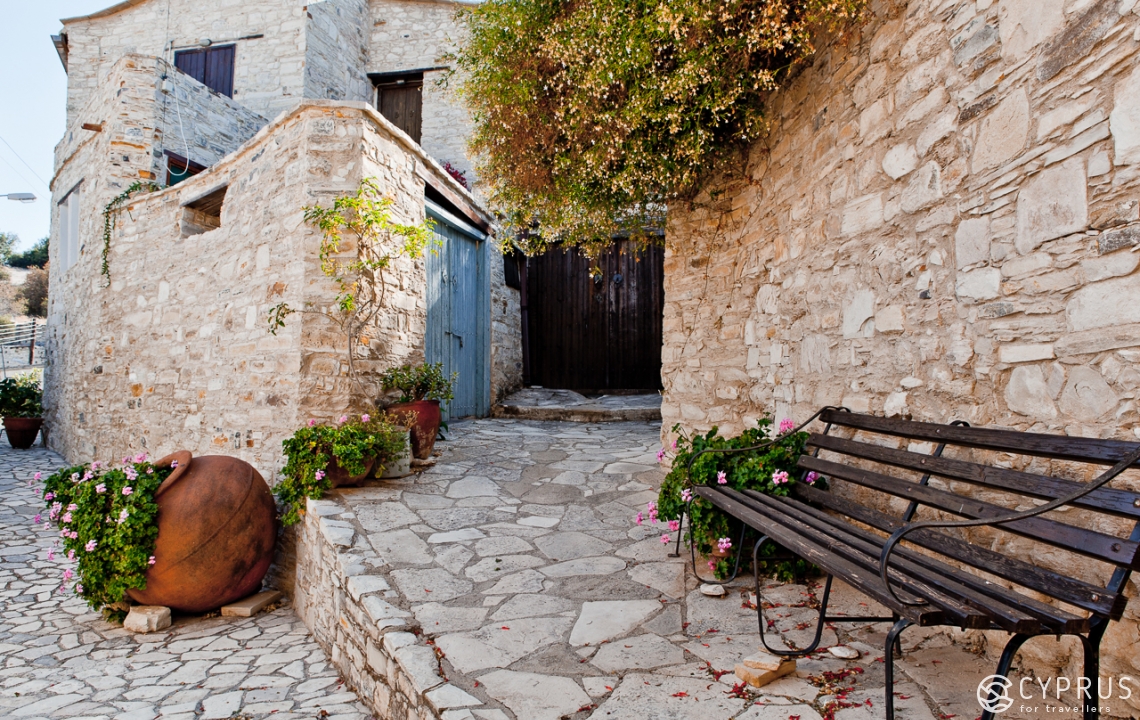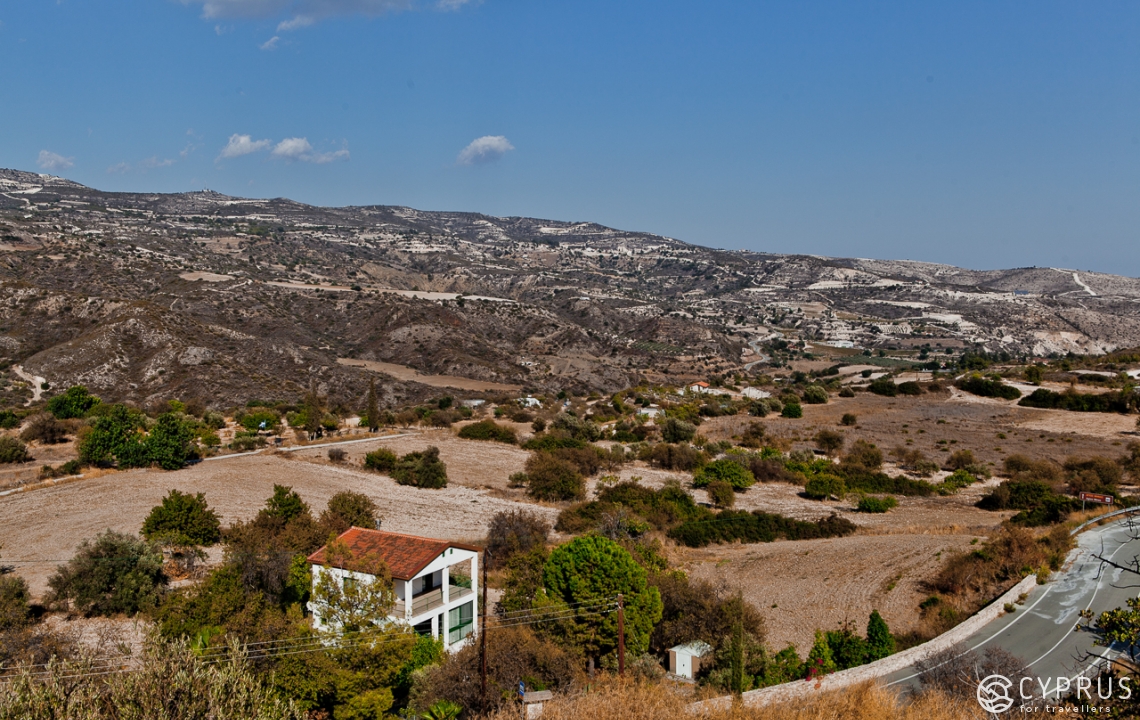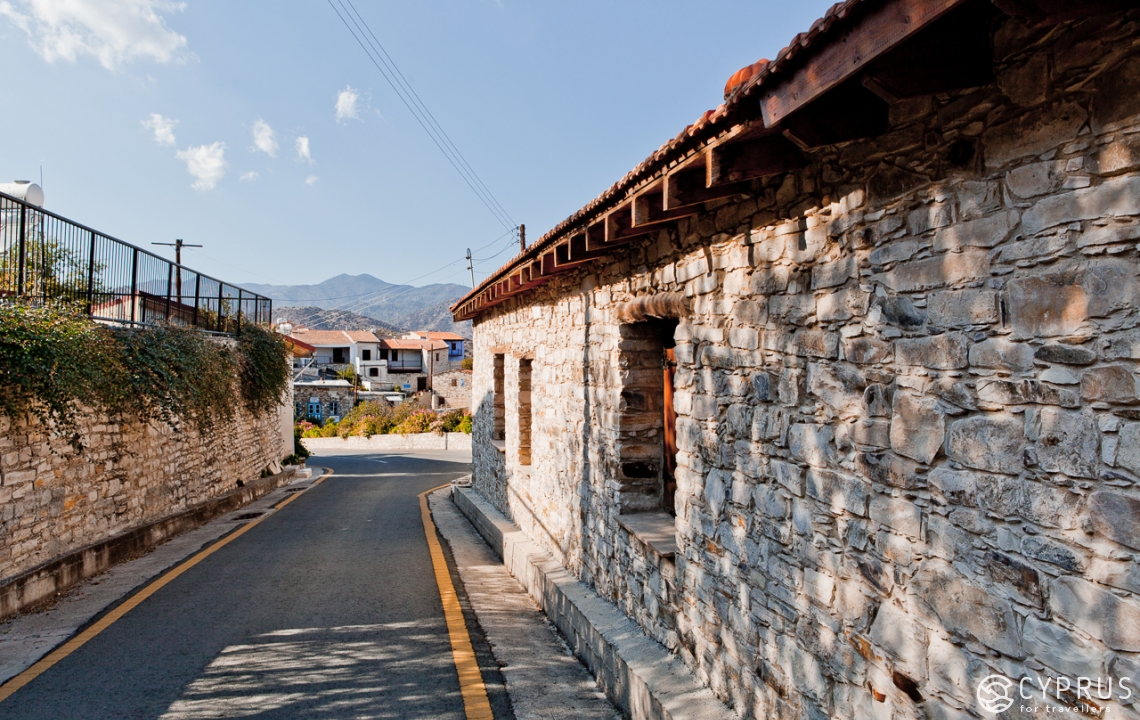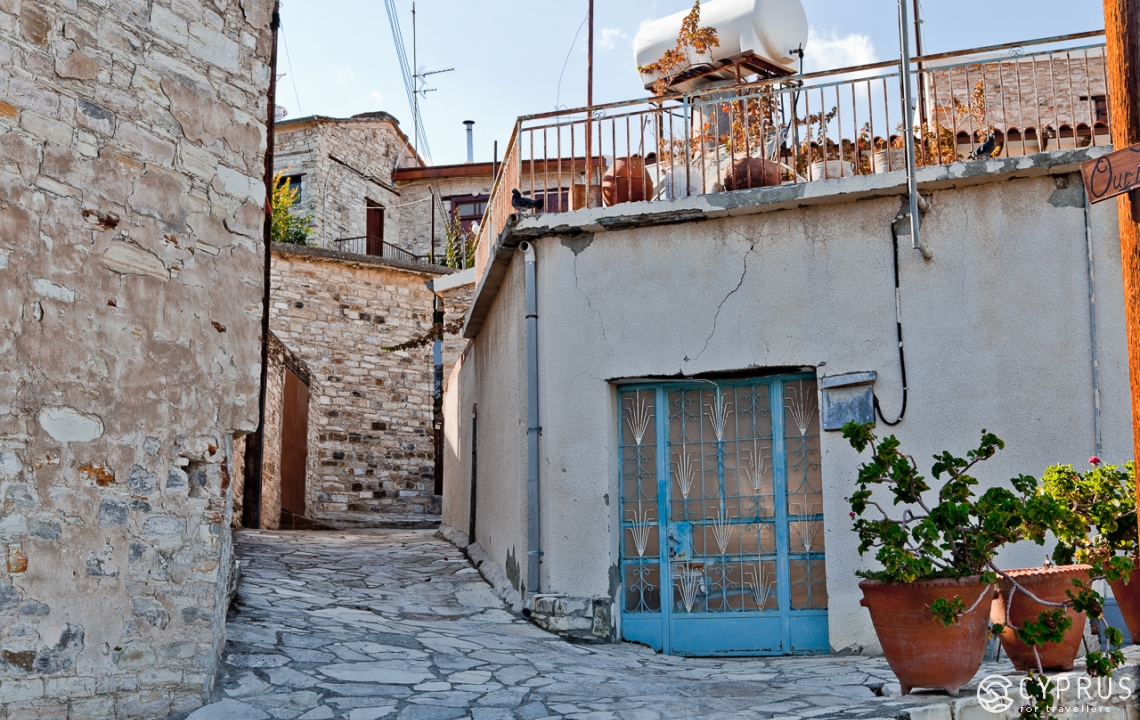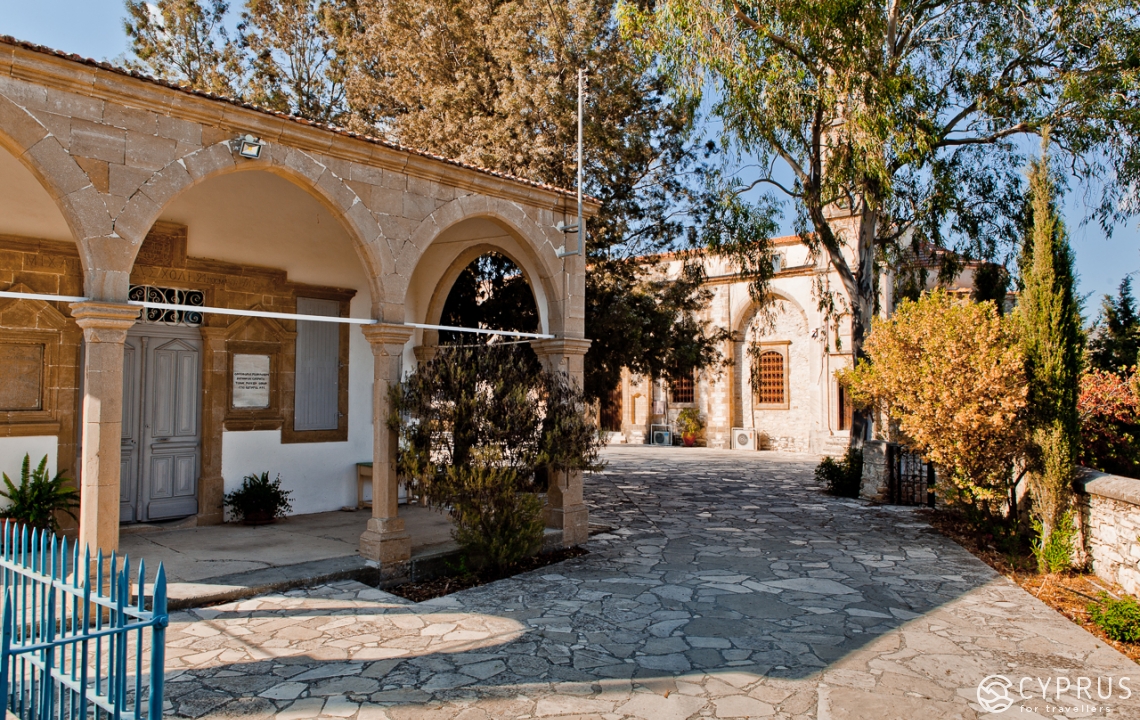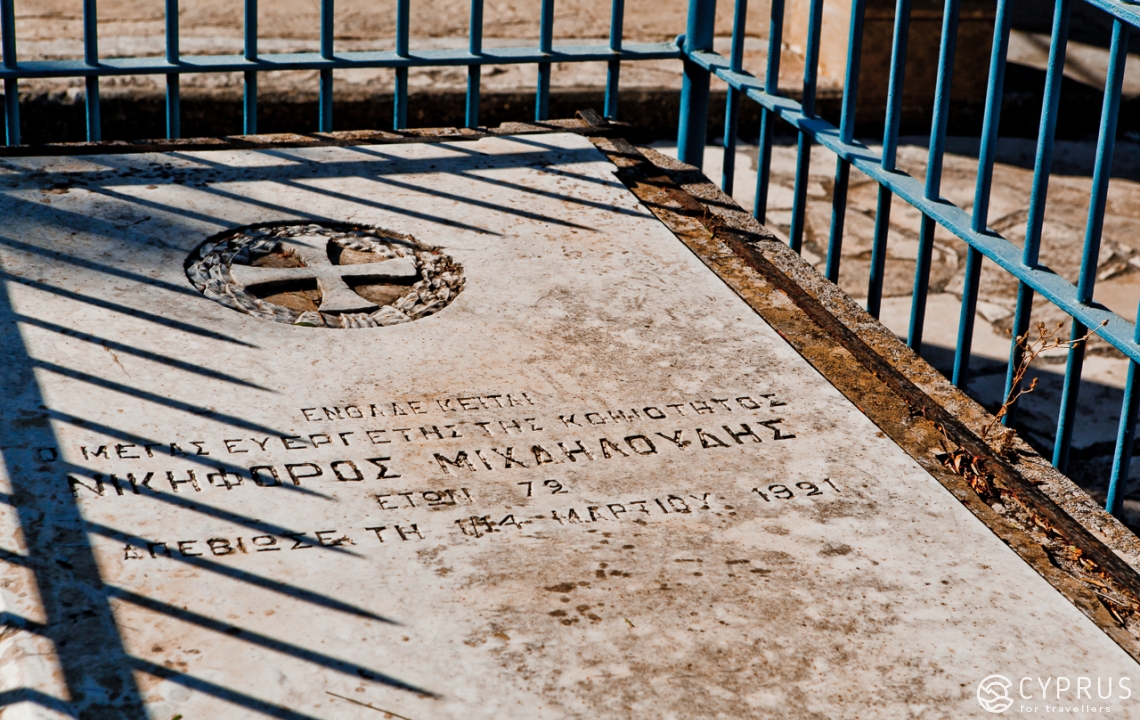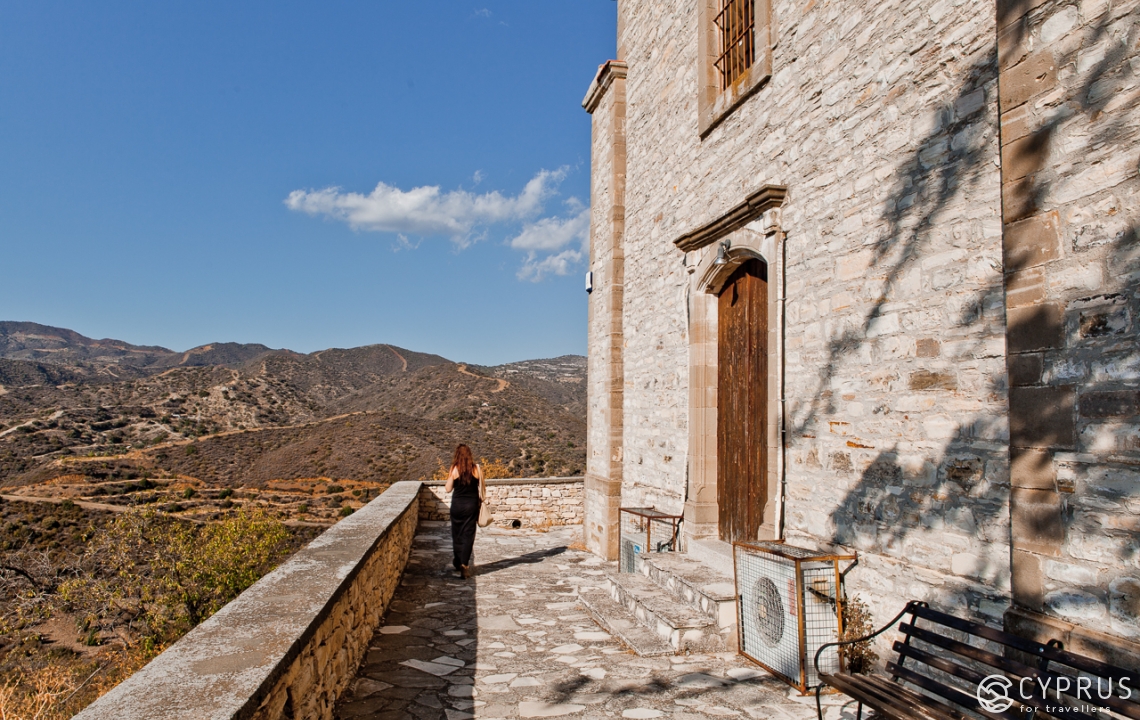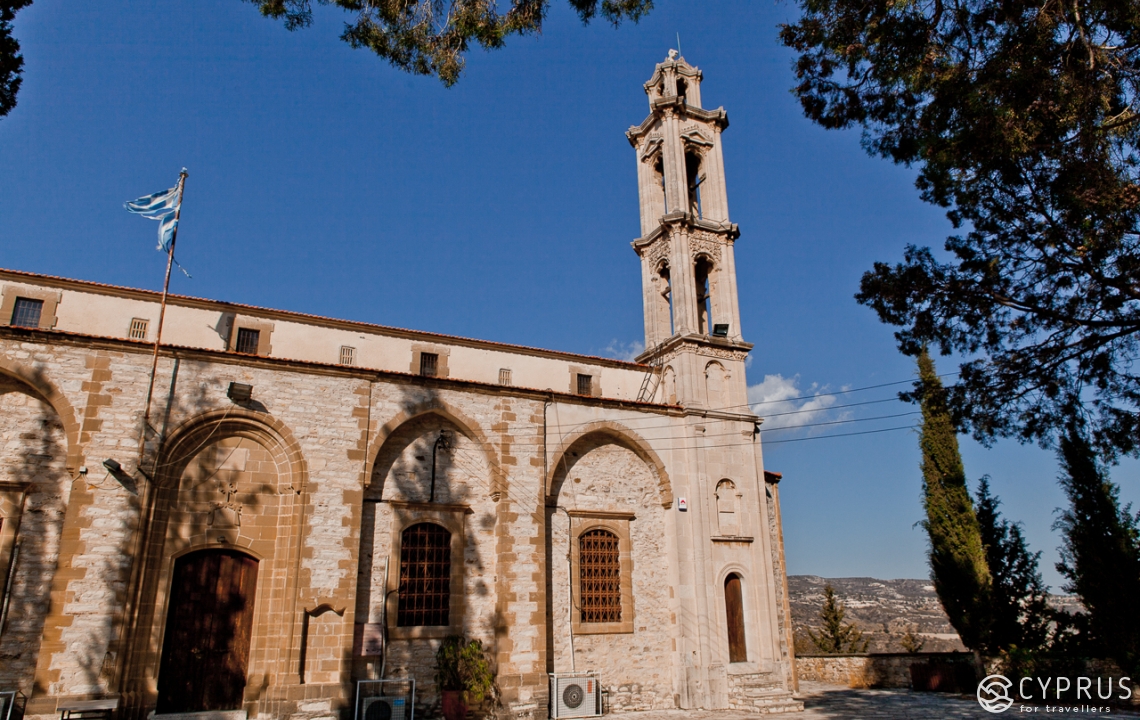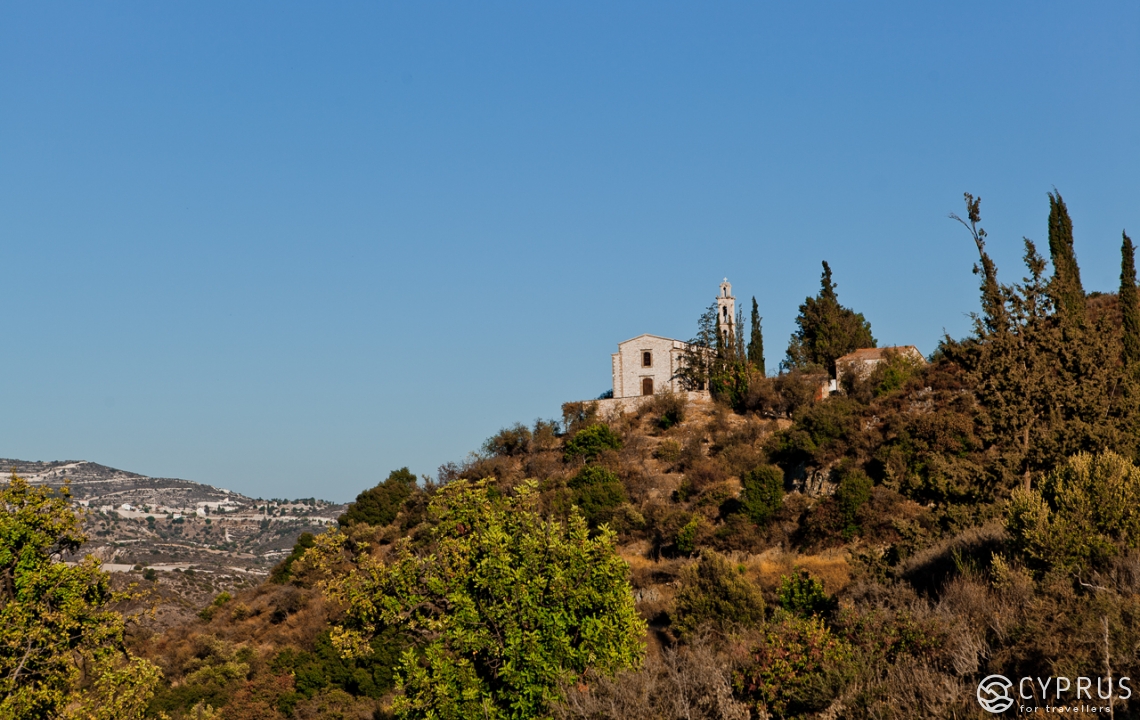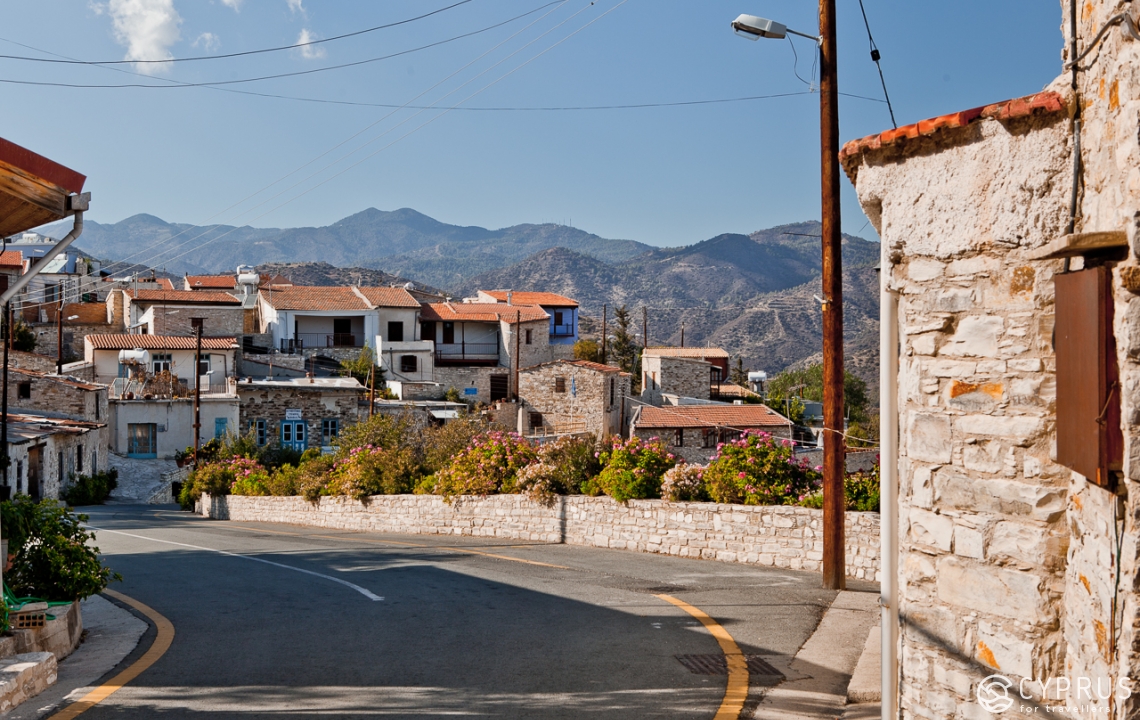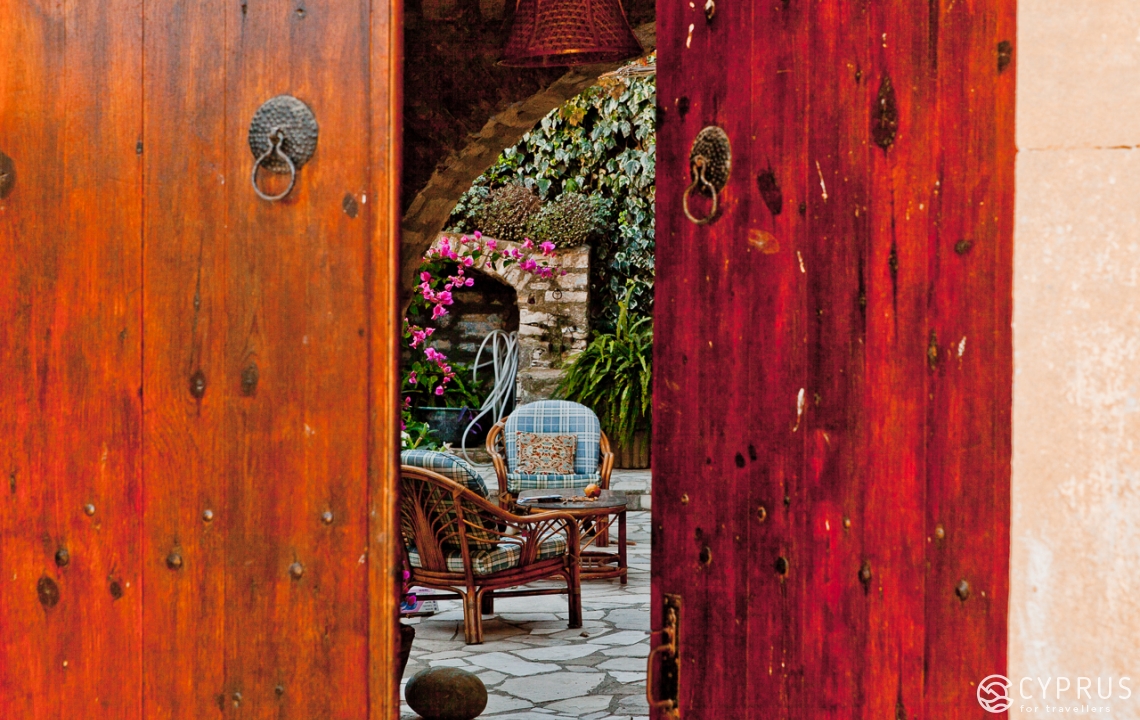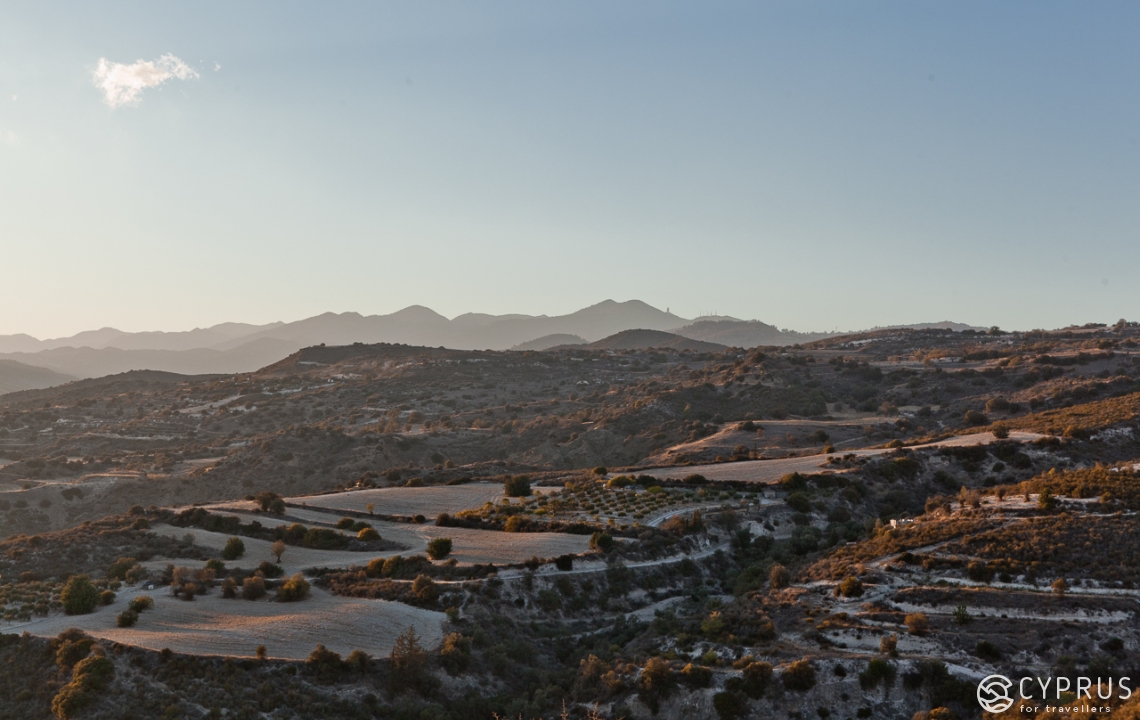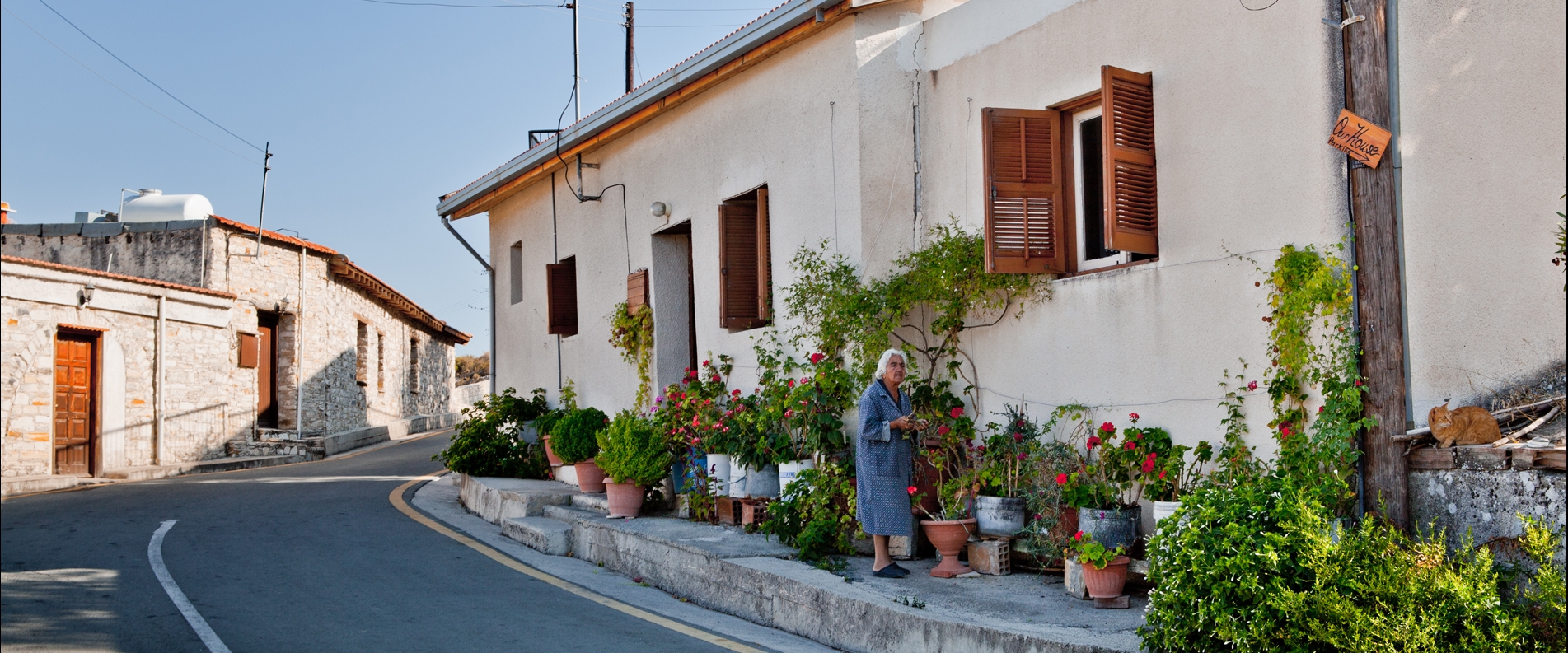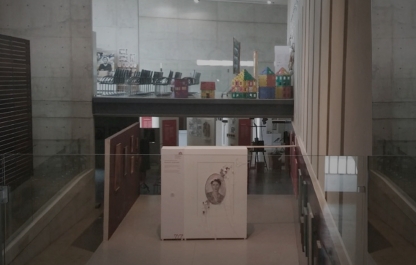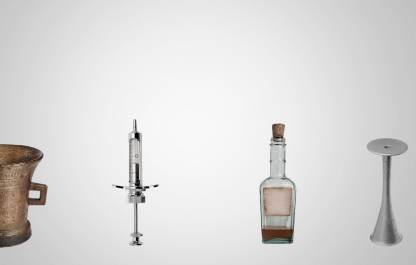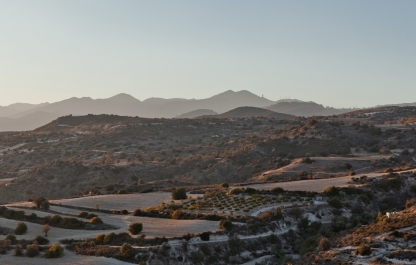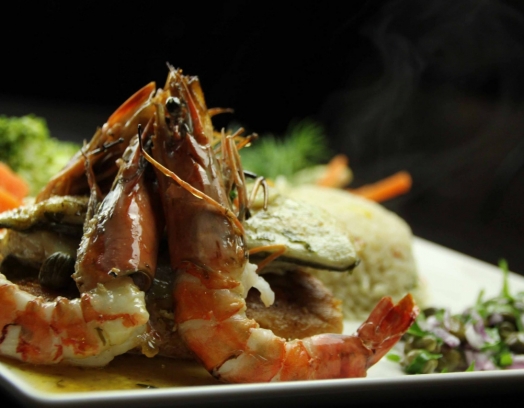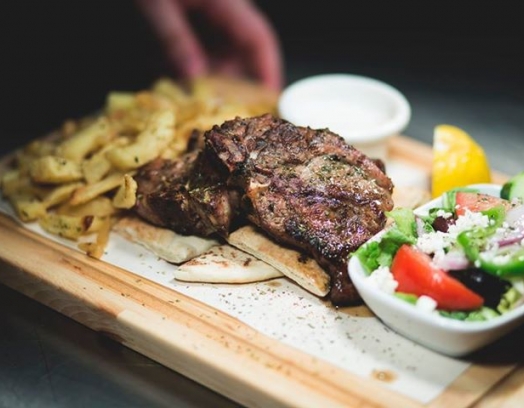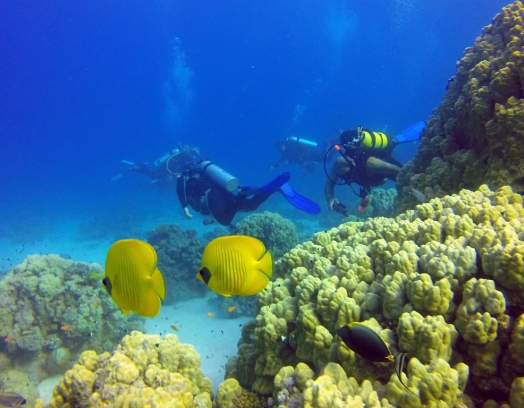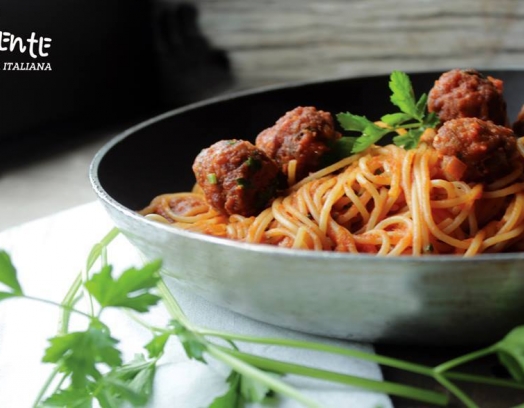You’ll find the small mountain village of Vavla in the Larnaca region (38 km west of the town itself, 10 km from Nicosia, and 15 km from the coast) in the foothills of the Troodos mountains. It now has fewer than 100 inhabitants and has been declared a listed village in order to protect and preserve its historic houses and other limestone buildings. It is popular with tourists for its stunning views our over the surrounding area.
It is certainly worth a visit for the view alone.Unlike many other places in Cyprus where the hot summer takes its toll transforming the landscape into a parched, burned-out vista, the hills around Vavla stand out: they remain delightfully green and are dotted with the windows of the houses and all kinds of interesting buildings made from local limestone that line the narrow cobblestone lanes. The lush greeneryisn’t only to be found in the surrounding area, but also in the village itself: everything is covered with jasmine and there is an abundance of geraniums at the front doors and on the balconies of the small village houses. The relative silence of the village (after all, there are very few permanent local residents) is always permeated by the knocking of hammers or the buzz of saws, and the wind sometimes wafts in the smell of fresh paint. These are the sounds and scents of old Vavla’s gradual, day-by-day, rejuvenation as it looks hopefully to the future.
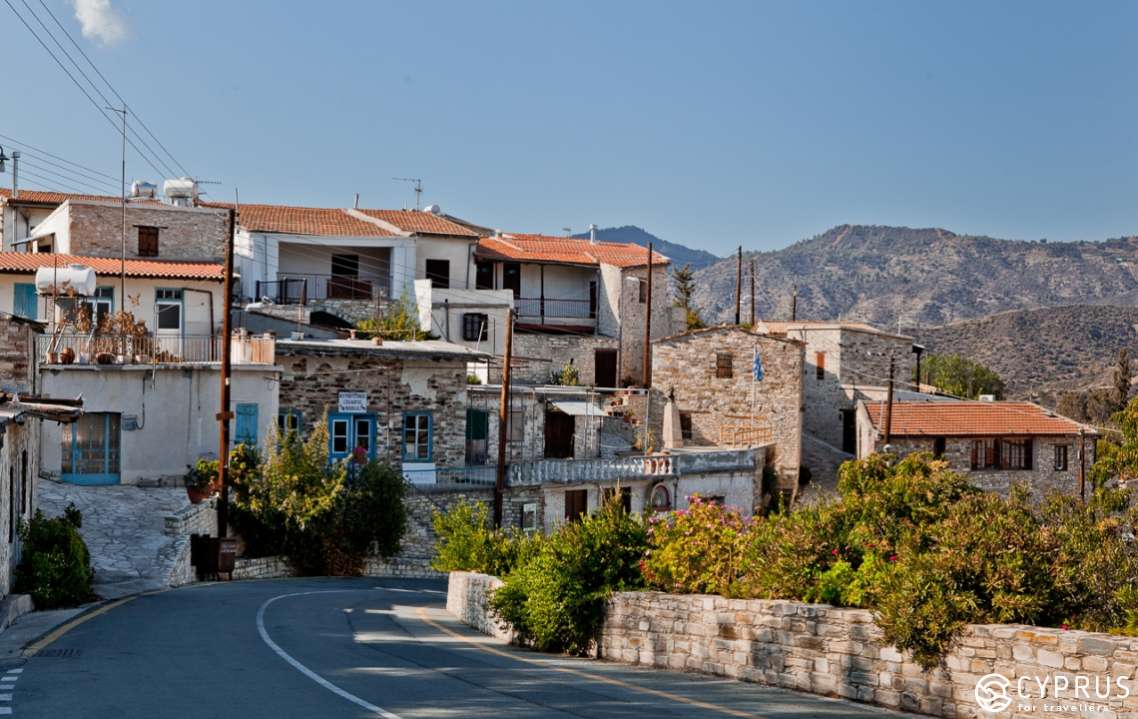
It remains unknown exactly when the settlement was founded but archaeological finds suggest that people have lived there for a long time. It is still relatively common for treasure and amphoras to be found in caves in the area — sometimes as part of a burial. However, the village’s records wereinterrupted and historians have even pointed out that the very name "Vavla" even disappeared from historical sources for some time.
As for its name, it is thought to come from the name of an aristocrat called De Vavyla, presumably a Lusignan era (14th century) landowner. For example, on a French map from 1367, theareahas been marked as "Vala" or "Vaules". Later, on another map drawn up by Europeans, it is marked as “Vaula” (1423).
Unnamed farms cropped up around the settlement but just as quickly sunk into oblivion. The church of Panagia-tis-Agapis (Our Lady of Love, which we will talk about a little later) was built at a distance from the local towns of the time on the site of a former small settlement.
The soil in the area is relatively fertile and suits the cultivation of olives, carob trees, citrus fruits (tangerines, oranges, lemons), vineyards and grains. Until the 1950s, the local population mostly worked in agriculture and the money they made from their produce (especially olive oil and carob) was enough to keep people in the village. As is customary in the region, women hada longstanding tradition of making Lefkaritiko lace embroidery, which brought significant additional income to their families.
However, after 1955-1960 agriculture ceased to be profitable and young people left to the cities to get an education and find good jobs. A number also left Cyprus, mainly to the UK, the USA, and Australia: some never returned and it is said they have been "lost afar".The outflow of the population caused the village to experience a decline and its life was fading away, it seemed, for the foreseeable future... until better times came along.
Yet there were those who returned, or whose children and grandchildren decided to do so and start a new life in their historic homeland.
Thus, Vavla has managed to retain its population and continues to attract more and more new people. These days, there are just over 50 permanent residents and about 70 “second-homers” in the village: both Cypriots and foreigners who have a house here and come to spend their weekends and holidays in the countryside. The village is currently undergoing a real renaissance: the authorities decided to restore the run down old buildings. The restoration works have been faithful to the historic appearance and feel of the village while bringing the buildings up-to-date and equipping them with all the mod-cons. There is also support and assistance provided to those who are interested in moving to the village.
Beekeeping is one of the village’s main occupations: honey from Vavla is sold throughout Cyprus. The hills and valleys around the village are covered in herbs, thyme, and wild flowers, which are the main source of fragrant honey. There are also a lot of almond groves. More recently, newcomers have recently begun making jams (up to 50 different flavours) and chutney (a sauce made with fruit, berries, and spices, which is sometimes served “English style” at Christmas). The village is also on one of Cyprus’ wine routes, which passes through the mountainous terrain between Larnaca and Nicosia.
We came here directly from Kato Drys so we left our cars on the side of the main road that connects both villages. In Vavla there is another car park next to the recreation area, by the stone steps. In what is roughly the centre (where the road forks to Lageia and Kato Drys) there is an information stand with a map of local places of interest. The village has plenty of signs. It also has well-placed benches at the spots with the most impressive panoramic views, and a picnic area and children’s playground in the park.
Fun fact: last time, you might remember, when we visited Kato Drys (nearby Vavla) we noticed there was a distinct lack of street names but the houses were numbered. Vavla apparently decided to “do without” both “excesses”.
The village is very smallso you need less than an hour to explore. All the same, its stunning unforgettable views, monuments, and atmosphere of antiquity will make you want to stay a little longer.
For now, the only local tourist attraction consists of a singular coffee shop. As you can imagine it’s an incredibly popular place: locals and tourists alike can make their own coffee and leave payment in a jug ... self-service Cyprus-style!
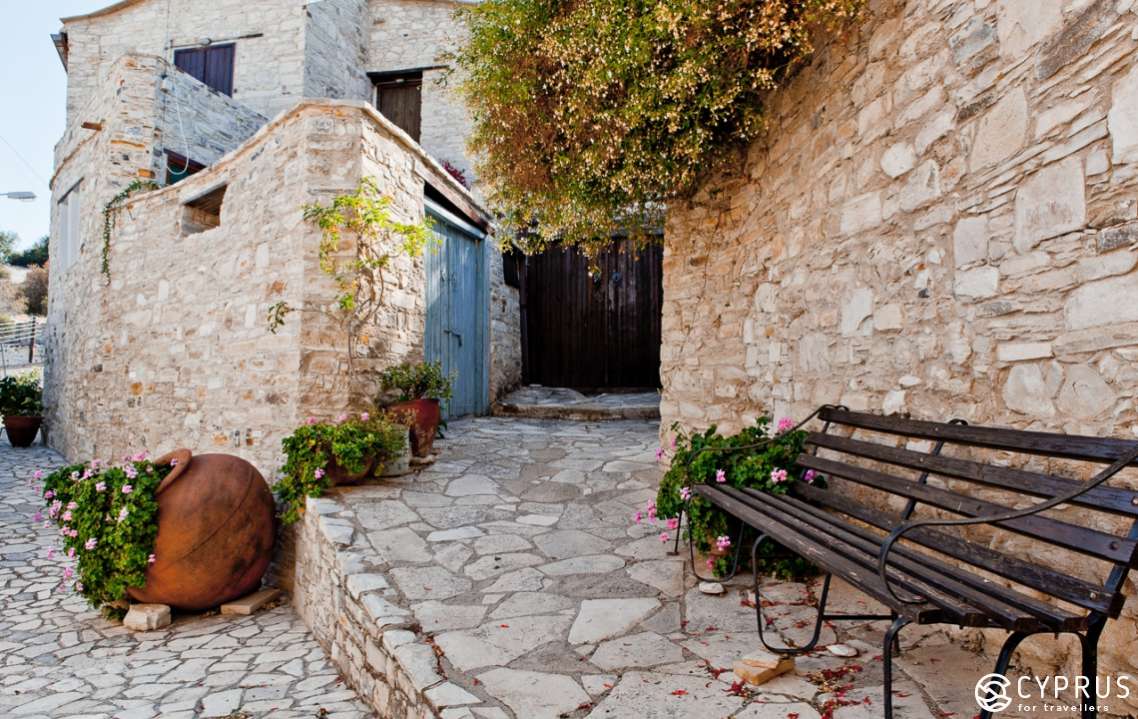
However, there are some serious town-planning projects that have been completed (or are underway) and other measures being taken to beautify and modernise the village, which we have listed below:
- reconstruction of the central square and modernisation of street lighting;
- paving the streets and reinforcing the stone walls of historic buildings in the centre;
- a new cafe in the park and a space where various public events can be held;
- restoration of the newly-acquired olive oil factory with the creation of a local history museum there;
- Restoration of the village well (next to the old school and St. George’s Church). The well was dug in 1917 and was the main source of drinking water for most of the village until 1925 when the water supply was installed. Later, the well was only used for livestock farms. In the 80s it was filled up, which led to the area experiencing desert-like conditions during dry seasons.
Some of the projects mentioned above received funding from the European Union. However, the village’s main source of income for its restoration and further development is agrotourism.
Agrotourism
There are several countryside hotels in the village. Hiking trails were created to develop the natural surroundings: in the hills, along the Agios Minas River, to Panagia-tis-Agapis and back, and to the centre of Vavla. You can find leaflets with these routes in the local village hall.
Where to stay:
Vavla Rustic Retreat has 5 rental options: they include studio apartments, and one- and two-bedroom suites. All rooms have all the mod-cons for a comfortable stay and are perfect for guests who are seeking the unique atmosphere and cosiness of a country house.
Contact details: +357 96865404, info@vavlarusticretreat.com
Our House (near Panagiya-tis-Agapis) is a traditional country house with three bedrooms, two living rooms and a dining room, all with authentic interiors.
Contact details: +357 97667198, donnamarie@countryhousecyprus.com
Main Sights
There are three churches and the Agios Minas convent in and around Vavla. St. George’s Church is the largest and is located in northern Vavla.
The Church of Archangel Michael is in the south as you enter the village. It has recently been restored. In ancient times, it had an old iconostasis — a genuine work of art. However, it was almost destroyed through negligence. In the end, it was replaced with a new one. Nevertheless, the church has several restored old icons you can enjoy.
The third building is a church called Panagia-tis-Agapis, which is 3 kilometres north of Vavla on the banks of the Agios Minas River. This is the only religious building in Cyprus and, it would seem, the world over with this name. Services are held here once a year (on Good Friday) but the church is surrounded by an idyllic landscape and is open every day to pilgrims and villagers. The church was rebuilt in 1934 on the foundation of an old chapel by the local resident, Spiros Charalambous, in memory of his daughter, Maria, who died at a young age. The relatively-new building houses the icon of Panagia-tis-Agapis which dates back to the 16th century. Several years ago, looters stole the icon but soon had to return it after being struck down by illness and misfortune.
The church is linked with interesting beliefs and rites: the Vavla locals traditionally pray here, and couples take vows of eternal love to each other. Behind the altar there is a piece of marble, which covers an area of consecrated ground. The people of Vavla believe that if they take pinch a pinch of this earth and add it to coffee or throw it on the back of their partners, it will guarantee them “eternal love on Earth”!
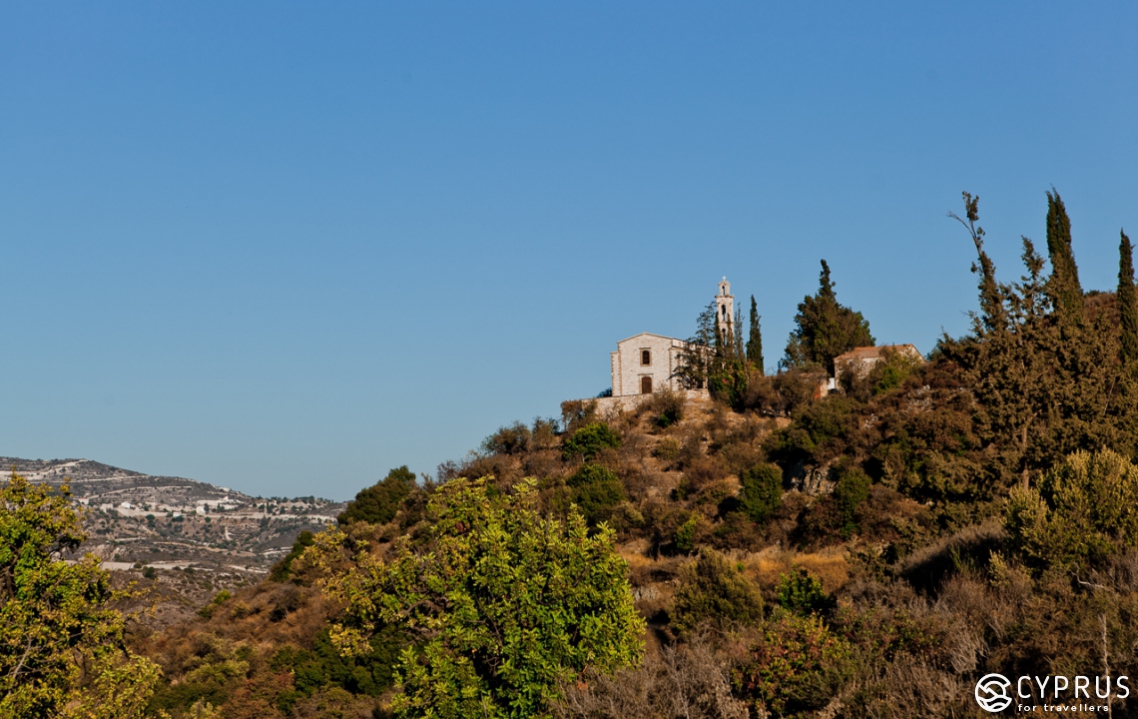
The Agios Minas Convent
It is 2km outside the village on the road to Kato Drys and is one of 19 large active convents in Cyprus. This 15th-century landmark combines features of Byzantine and Gothic architectural styles. The nuns paint icons, grow fruit, and produce traditional Cypriot sweets.
Agios Minas stood empty for many years. However, in 1964 it was once again inhabited by nuns from the Agios Georgios Alamanos convent in Limassol. The sisters restored the convent by dint of their diligence and with support from the public. Remembrance Day is celebrated on November 11th. Pilgrims and other visitors from all over Cyprus come to attend services and take part in a great celebration at Agios Minas. Incidentally. You can find accounts of the early celebrations that took place here in the works of traveller and monk Vasily Barsky. He visited the convent in November 1737. Even then, the afflicted worshipped the miraculous icon of Agios Minas, believed to cure a number ofdiseases.
We were here in the evening as we returned from Vavla. Right by the gate, there is an information sign with instructions for pilgrims: it is requested that visitors observe silence and show respect for this place; do not smoke; women and men must be appropriately dressed; and guests to the convent cannot stay the night. From May 1 to September 30, the convent closes from 12:00 to 15:00.
The convent’s spacious courtyard is surrounded by stone walls with wonderful mosaic icons: the first one is of Agios Minas, which is then followed by images of John the Baptist, Jesus Christ, the Virgin Mary, Father Cassian ... Visitors have access to the area leading from the gate up to inner green courtyard where the church is located. The entire courtyard is divided into two parts and the very inner part is closed off to laypeople. Inside, it houses the nuns’ dwellings and cells, as well as their gardens and vegetable patches with their adjoining buildings.
The evening service can be heard. We went into the courtyard (opposite the entrance there is a water source lined with stone under the icon of Our Lady Oranta “above the cup” — the symbol of Communion) where the choir was singing in the church. Its doors were closed, however,to maintain the devout atmosphere. At the entrance there is aconvent shop where you can buy books and icons as well as products made right there in the convent: olive oil, honey, etc.
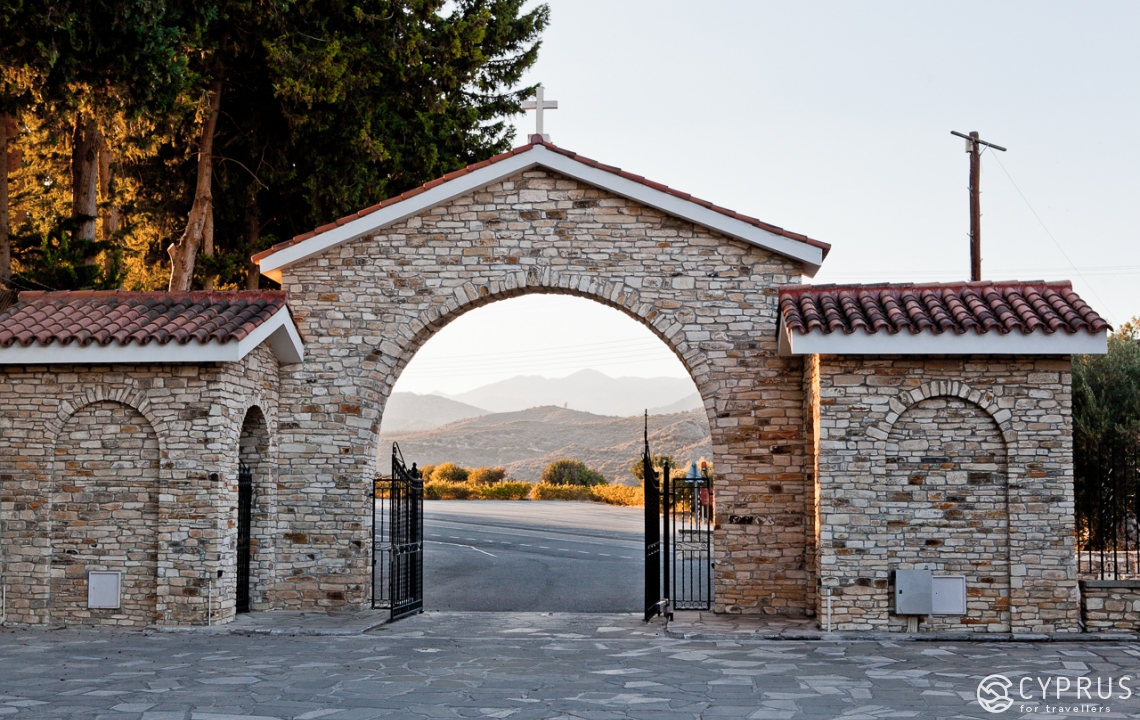
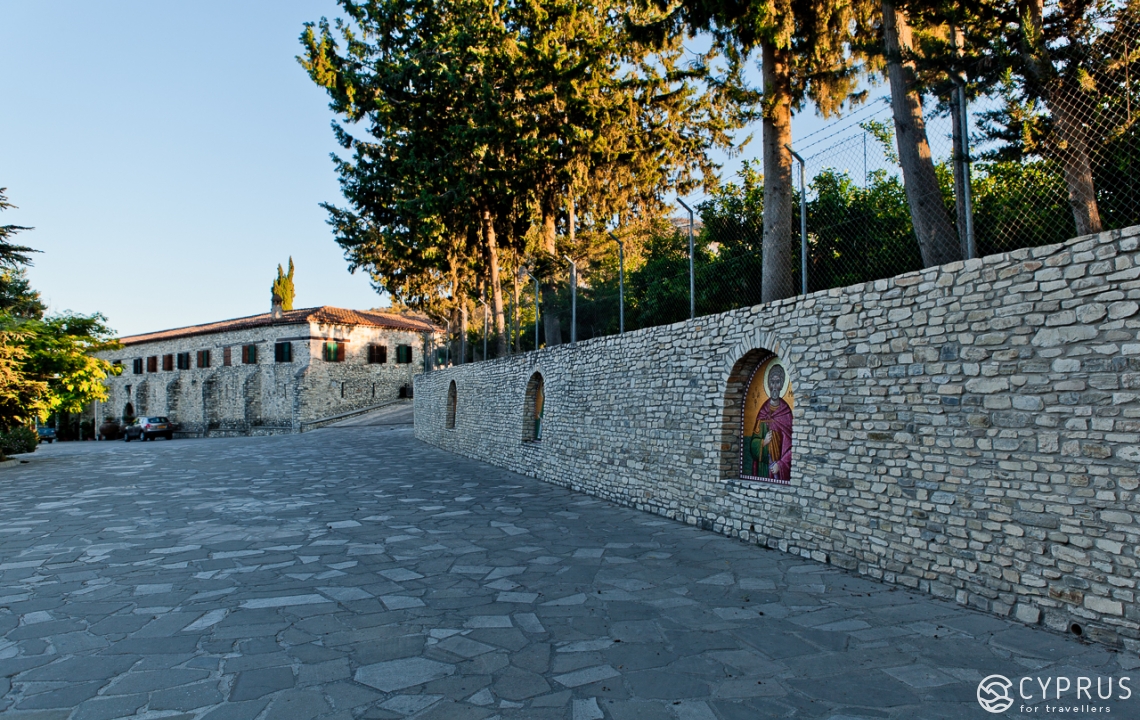
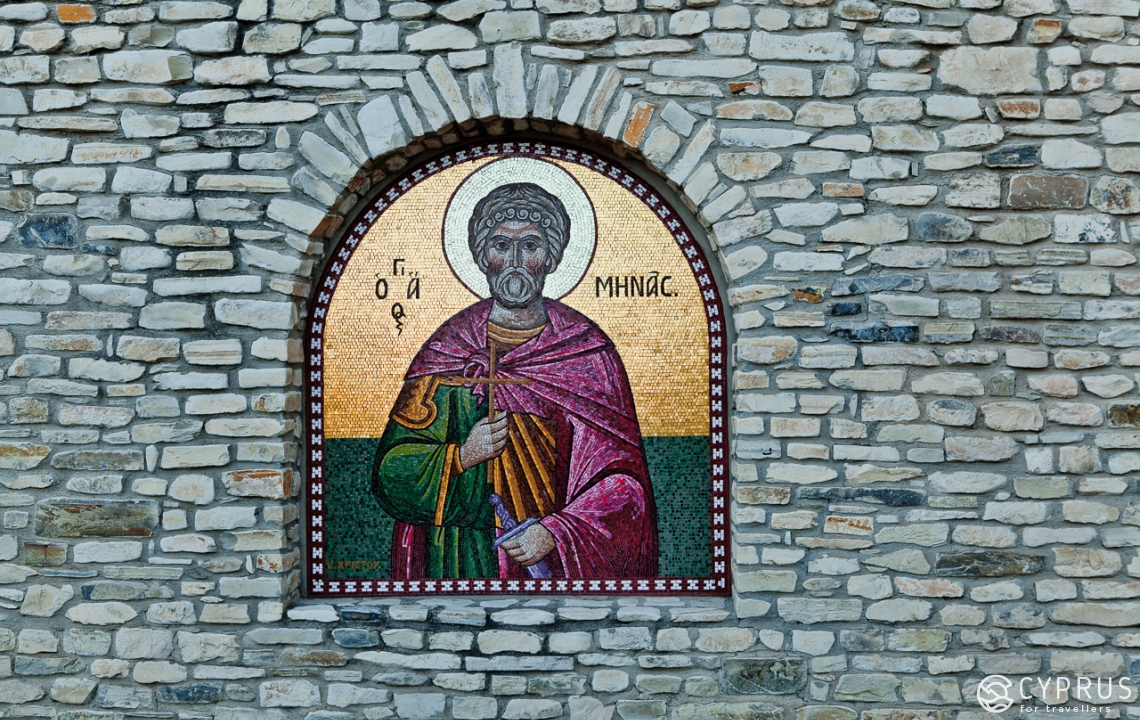
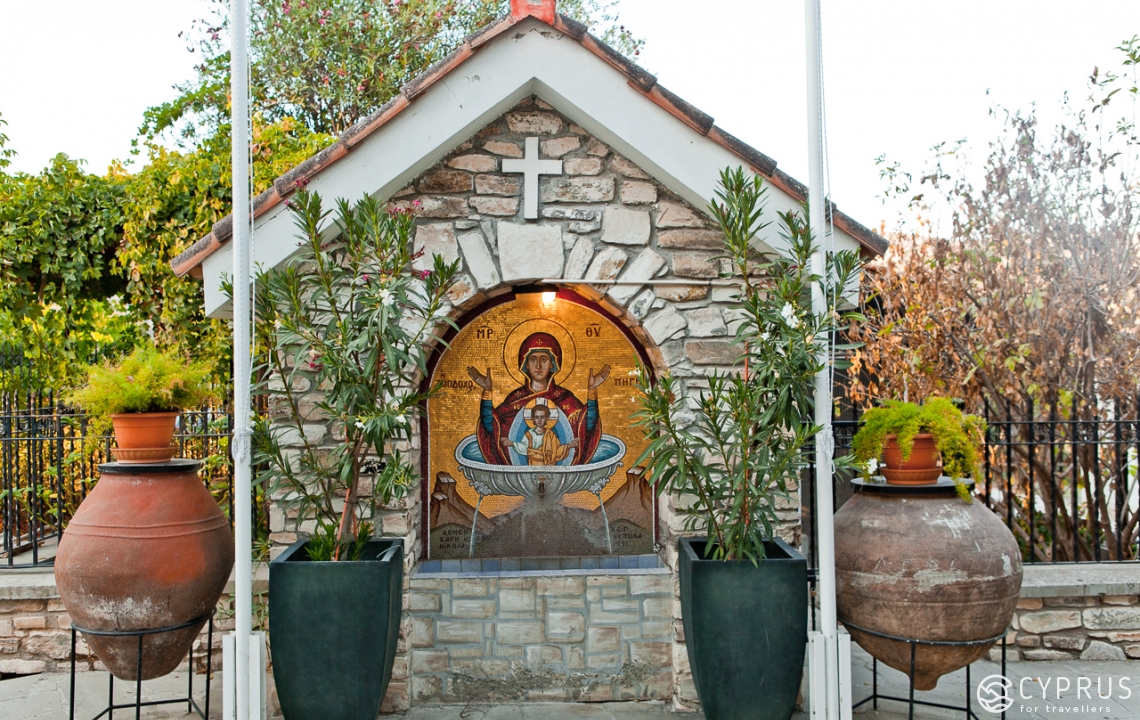
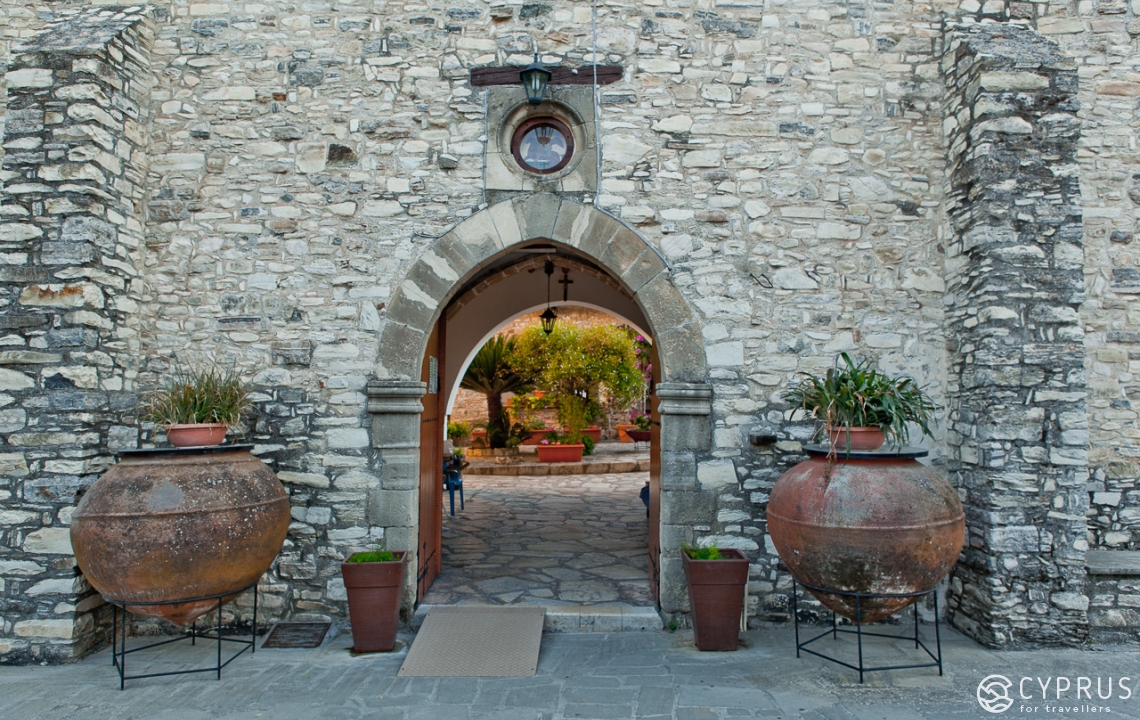
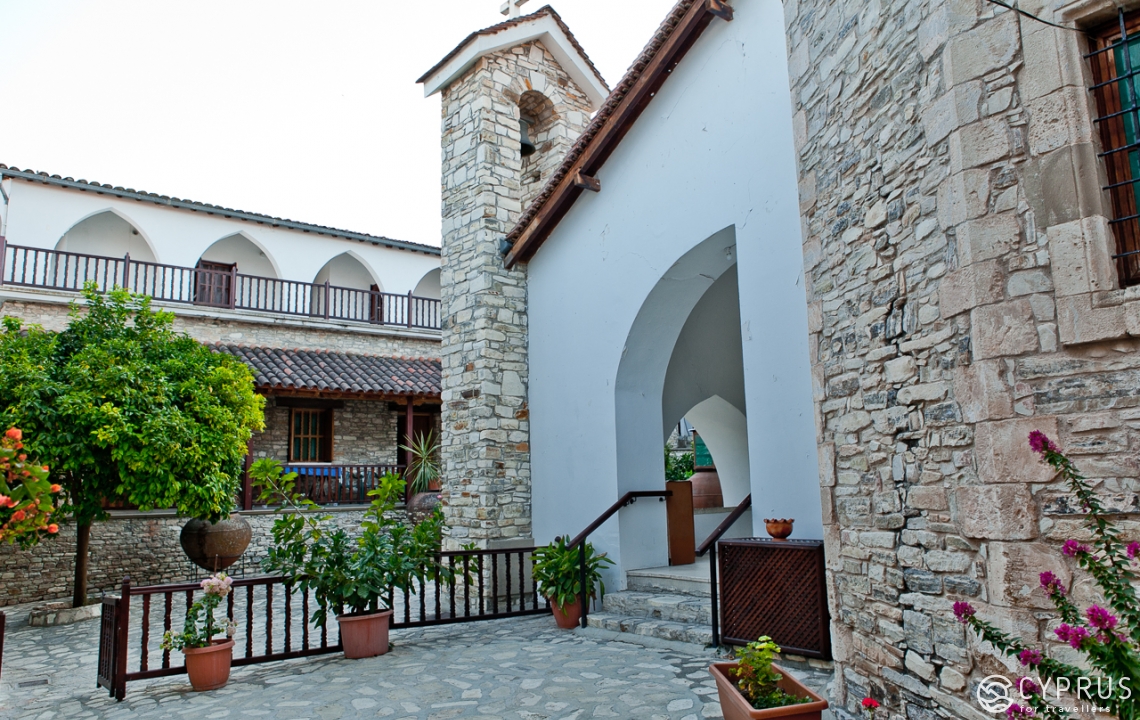
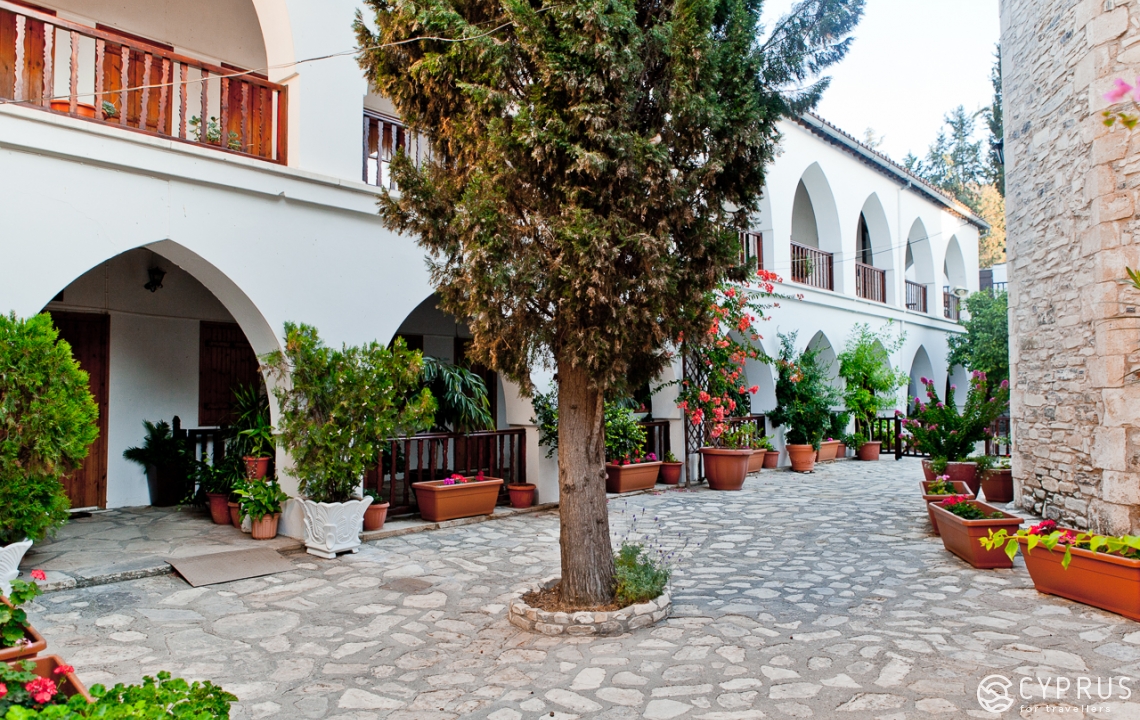
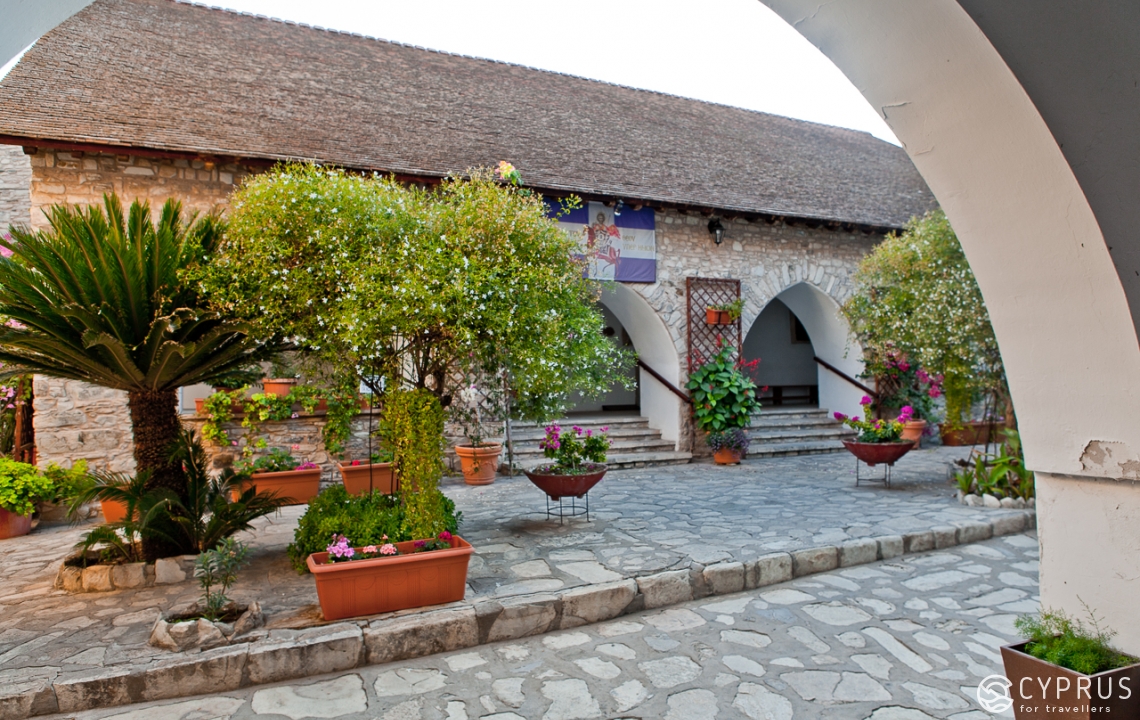
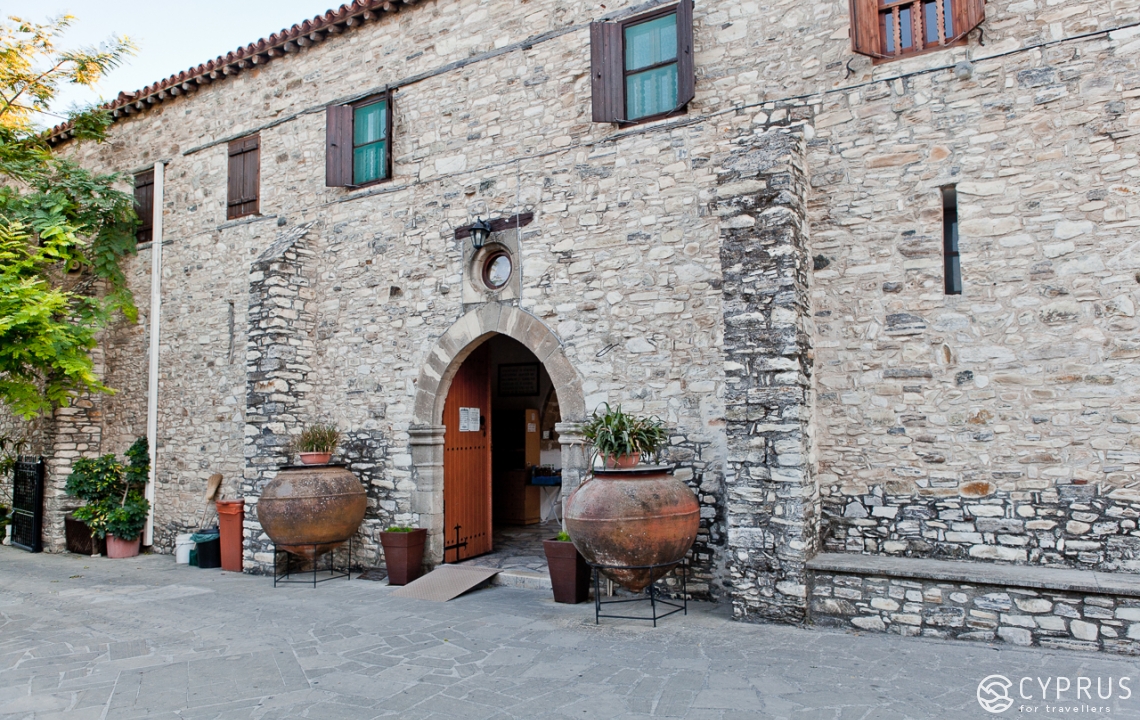
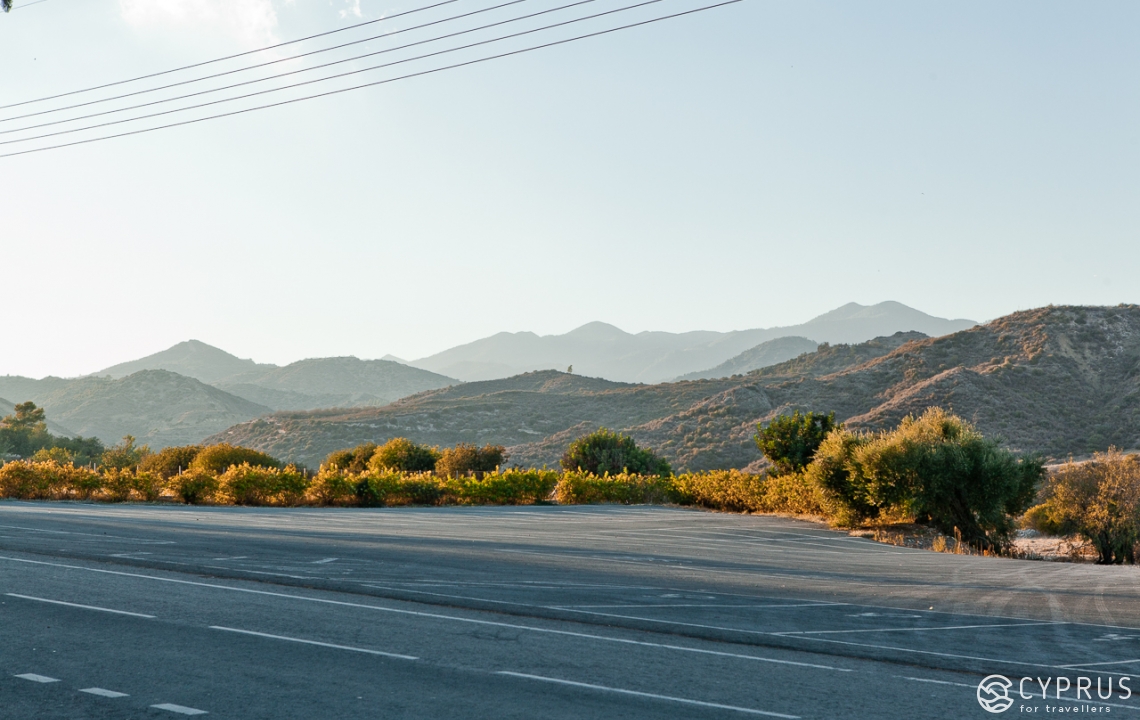
Contact details (for group visits): +357 24342952
Opening hours: daily, 08:00 - 12:00, 15:00 - 17:00 (summer); 08:00 - 12:00, 14:00 - 17:00 (winter)
The convent is closed on holidays.
There is more than adequate parking opposite the convent as well as bus stops on routes that go to Vavla and Lageio.
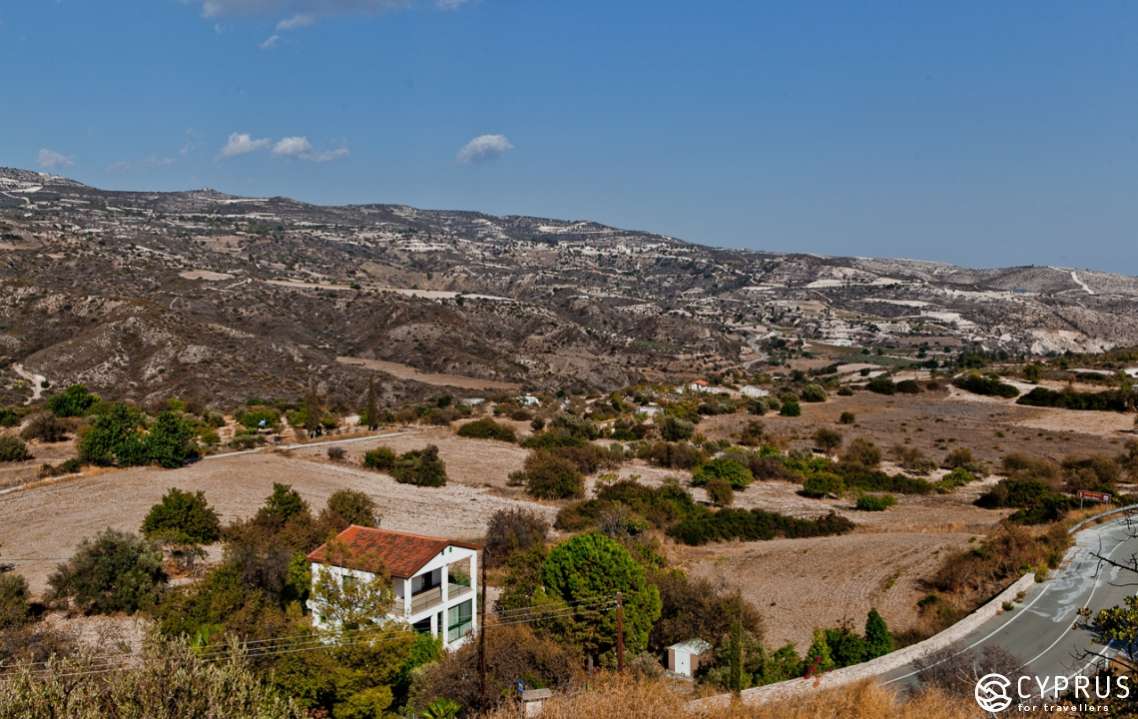
How to get there:
From Limassol (36 minutes) and Paphos (1 hour 18 minutes): Take the A1 motorway (A1) towards Larnaca and Nicosia. Turn left onto the B1 at Exit 14.
From Larnaca (40 minutes) — take the same A1 motorway towards Nicosia. Turn right onto the B1 at Exit 14.
From Nicosia (50 minute) — take the A1 motorway towards Limassol. Leave at the exit on to the B1 to Vavla, Lageio and Khirokitia. After 200 m, turn right on to the E133 (to Vavla and Khirokitia); then follow the signs.
By bus: 404 (for more information, check out)
Its green hills, tranquillity and remoteness, as well as the hospitality of the locals all make Vavla an ideal place to visit. Find some time to come here to get up close to traditionalarchitecture, andenjoy the village’s beautiful lanes and its breath-taking expanses of natural landscape.
For more information, check out: www.vavlavillage.net
Pleasant travels! Keep and eye out for our latest articles!
